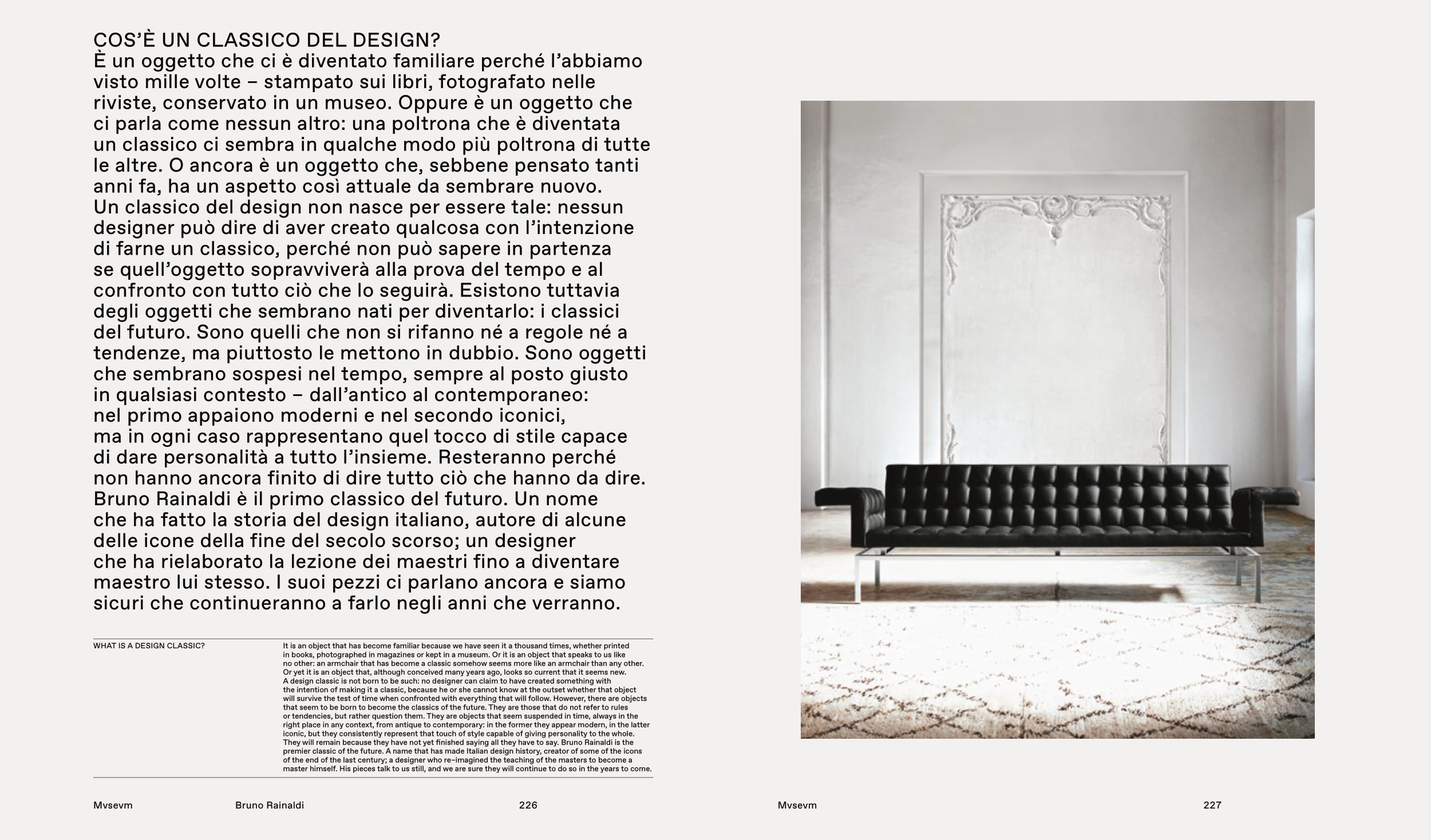COS’È UN CLASSICO DEL DESIGN?
È un oggetto che ci è diventato familiare perché l’abbiamo
visto mille volte – stampato sui libri, fotografato nelle
riviste, conservato in un museo. Oppure è un oggetto che
ci parla come nessun altro: una poltrona che è diventata
un classico ci sembra in qualche modo più poltrona di tutte
le altre. O ancora è un oggetto che, sebbene pensato tanti
anni fa, ha un aspetto così attuale da sembrare nuovo.
Un classico del design non nasce per essere tale: nessun
designer può dire di aver creato qualcosa con l’intenzione
di farne un classico, perché non può sapere in partenza
se quell’oggetto sopravviverà alla prova del tempo e al
confronto con tutto ciò che lo seguirà. Esistono tuttavia
degli oggetti che sembrano nati per diventarlo: i classici
del futuro. Sono quelli che non si rifanno né a regole né a
tendenze, ma piuttosto le mettono in dubbio. Sono oggetti
che sembrano sospesi nel tempo, sempre al posto giusto
in qualsiasi contesto – dall’antico al contemporaneo:
nel primo appaiono moderni e nel secondo iconici,
ma in ogni caso rappresentano quel tocco di stile capace
di dare personalità a tutto l’insieme. Resteranno perché
non hanno ancora finito di dire tutto ciò che hanno da dire.
Bruno Rainaldi è il primo classico del futuro. Un nome
che ha fatto la storia del design italiano, autore di alcune
delle icone della fine del secolo scorso; un designer
che ha rielaborato la lezione dei maestri fino a diventare
maestro lui stesso. I suoi pezzi ci parlano ancora e siamo
sicuri che continueranno a farlo negli anni che verranno.
It is an object that has become familiar because we have seen it a thousand times, whether printed
in books, photographed in magazines or kept in a museum. Or it is an object that speaks to us like
no other: an armchair that has become a classic somehow seems more like an armchair than any other.
Or yet it is an object that, although conceived many years ago, looks so current that it seems new.
A design classic is not born to be such: no designer can claim to have created something with
the intention of making it a classic, because he or she cannot know at the outset whether that object
will survive the test of time when confronted with everything that will follow. However, there are objects
that seem to be born to become the classics of the future. They are those that do not refer to rules
or tendencies, but rather question them. They are objects that seem suspended in time, always in the
right place in any context, from antique to contemporary: in the former they appear modern, in the latter
iconic, but they consistently represent that touch of style capable of giving personality to the whole.
They will remain because they have not yet finished saying all they have to say. Bruno Rainaldi is the
premier classic of the future. A name that has made Italian design history, creator of some of the icons
of the end of the last century; a designer who re–imagined the teaching of the masters to become a
master himself. His pieces talk to us still, and we are sure they will continue to do so in the years to come.
WHAT IS A DESIGN CLASSIC?
Mvsevm
227
Mvsevm
Bruno Rainaldi
226


